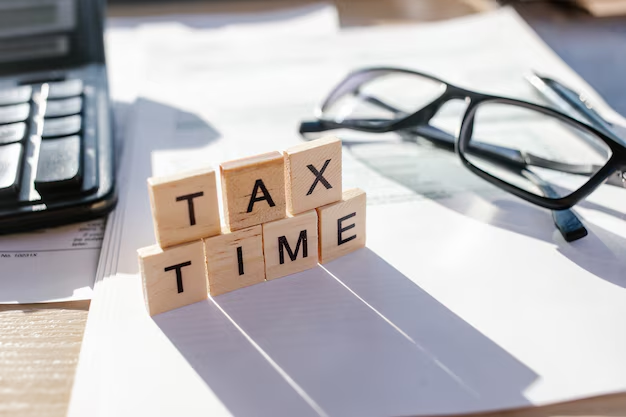Understanding Short Term Capital Gains Tax: What You Need to Know for 2023
Are you navigating the complex waters of capital gains tax and wondering how your short term investments might impact your tax obligations? You're not alone. Many investors are keen to understand how their financial decisions will influence their tax responsibilities. Whether you're a new investor or have been trading for years, understanding the nuances of short term capital gains tax can help you make informed decisions and potentially save money. Let's dive into this topic, unravel its complexities, and make it more approachable, as well as insightful for your future financial planning.
📈 What Are Short Term Capital Gains?
Defining Short Term Capital Gains
Short term capital gains arise when you sell an investment or asset you have held for one year or less. These can include stocks, bonds, property, or any other capital assets. The key aspect here is the holding period — a period of 365 days or fewer categorizes the gain as "short term."
Why the Differentiation Matters
The distinction between short term and long term capital gains is critical due to their differing tax treatments. While long term capital gains might benefit from preferential tax rates, short term gains are taxed at ordinary income tax rates, which tend to be higher. Being aware of this distinction helps investors assess the potential tax impact before deciding to sell an asset.
💰 How Much Is Short Term Capital Gains Tax?
The Basics of Tax Rates
Short term capital gains tax rates mirror your ordinary income tax rates. These rates depend on your tax bracket, which is determined by your total taxable income, including wages, other investments, and any applicable deductions. In 2023, the U.S. federal income tax brackets range from 10% to 37%, depending on your income level.
Calculating Your Tax Liability
To estimate the short term capital gains tax, you should:
- Compute the total gain: Determine the difference between your asset's sale price and its purchase price, adjusting for any associated selling costs.
- Ascertain your tax bracket: Refer to the latest tax bracket information to identify where your total income places you.
- Apply the rate: Multiply your gain by the rate corresponding to your tax bracket. This calculation will provide an estimate of your tax liability.
Practical Example
Suppose you purchase shares in a company for $10,000 and sell them for $15,000 within the same year, yielding a $5,000 gain. If your overall taxable income places you in the 24% tax bracket, you would owe $1,200 in taxes for this particular gain.
📊 Factors Influencing Short Term Capital Gains Tax
Understanding Income Levels
Higher income levels with more significant earnings can push you into a higher tax bracket, thus increasing the tax rate applicable to your short term capital gains. Therefore, it’s essential to factor overall income into your planning.
State Taxes and Other Considerations
In addition to federal taxes, you might also encounter state and local taxes on short term capital gains, which can vary from one jurisdiction to another. Being aware of local tax requirements is crucial for a comprehensive understanding of your tax responsibilities.
📚 Strategies to Mitigate Tax Liability
Timing Your Asset Sales
Strategic timing can play a vital role in reducing tax liability. By holding onto your investments for over a year, you might shift from short term to long term capital gains, often benefiting from reduced tax rates. Planning your asset sales with this consideration in mind can be advantageous.
Tax Loss Harvesting
If you have investments that have depreciated, you can sell them off to realize capital losses. These losses can offset your capital gains, effectively lowering your taxable income, and in turn, reducing your tax liability.
Maximize Retirement Accounts
Using tax-advantaged retirement accounts, like IRAs or 401(k)s, to hold assets can help defer taxes on gains until funds are withdrawn under potentially more favorable tax circumstances.
🔍 Navigating Related Tax Topics
How Do Short Term Gains Compare to Long Term Gains?
While short term tax rates align with ordinary income, long term capital gains benefit from reduced tax rates in many tax jurisdictions. Understanding this difference can influence investment decisions and potentially result in significant tax savings.
Common Misconceptions
One common misconception is that all investment profits are taxed identically. By now, it should be clear that holding periods and the type of asset significantly impact tax rates.
Important Legal Considerations
Awareness of changes to tax law is vital for compliance and optimization. Legislation can alter tax brackets, deductions, or even redefine the short term holding period, so staying informed is crucial.
✅ Key Takeaways for Short Term Capital Gains Tax
Here's a quick summary of essential points:
- Holding Period: Less than one year qualifies a gain as short term.
- Tax Rate: Ordinary income tax rates apply, ranging from 10% to 37% federally.
- State Taxes: Consider potential additional state/local taxes.
- Strategies: Try timing asset sales, tax loss harvesting, and leveraging retirement accounts.
Navigating the world of short term capital gains can seem daunting, but gaining clarity on how these taxes work is empowering. Knowledgeable decisions about when to buy and sell can lead to effective tax planning and potentially save you a significant amount of money. Keep these insights in mind as you continue your investment journey, making strategic decisions that align with both your financial goals and tax circumstances.

Related Topics
- Do Capital Gains Affect Tax Bracket
- Do I Have To Pay Capital Gains Tax
- Do I Have To Pay Capital Gains Tax Immediately
- Do You Pay State Tax On Capital Gains
- Does Florida Have Capital Gains Tax
- Does Kamala Harris Want To Tax Unrealized Capital Gains
- Does Texas Have Capital Gains Tax
- Does Wyoming Tax Capital Gains
- How Avoid Capital Gains Tax
- How Can I Avoid Paying Capital Gains Tax